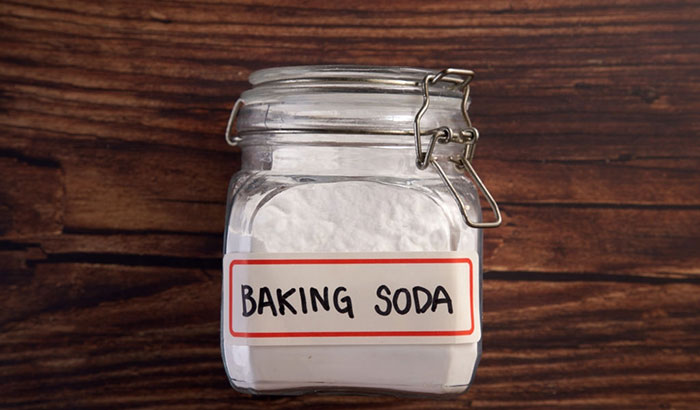Baking is an art, and every ingredient plays a crucial role in ensuring that the final product comes out perfect. One such ingredient that is commonly used in baking is baking soda. Baking soda is a natural alkaline ingredient with a powdery texture and is commonly used as a leavening agent in baking.Baking soda is also known as sodium bicarbonate, and it is responsible for producing carbon dioxide when it is mixed with an acid. The carbon dioxide produced by baking soda helps the baked goods to rise and expand, resulting in airy and fluffy baked goods such as cakes, pancakes, and muffins.
In this blog post, we will explore what happens when you run out of baking soda and how it affects the final product. We will also discuss the science behind baking, the role of baking soda in baking and different substitutes that can be used instead of baking soda. So let’s get started and discover the surprising consequences of baking without baking soda!Baking soda is not just a leavening agent; it also helps in neutralizing the acidity of the batter, promoting browning and adding a unique flavor to the baked goods. So, without baking soda, our baked goods would be quite different from what we are used to. But, don’t worry, this is where baking soda substitutes come into play. In the next section, we will explore some common baking soda substitutes that can be used in a pinch.
The Science behind Baking
When baking soda is mixed with an acid ingredient, the two react and produce carbon dioxide gas. This gas gets trapped in the dough or batter, creating air pockets that allow it to rise when it’s baked. Without baking soda, there is no reaction, and as a result, the baked goods will not rise. Additionally, the lack of carbon dioxide means that the finished product will be denser and won’t have the same fluffy texture that baked goods made with baking soda would have.Furthermore, baking soda also helps to neutralize the batter’s acidity, which allows it to set and cook more evenly. It also promotes browning, leading to that delicious golden crust that we all know and love. So, in summary, baking soda is a crucial ingredient that serves multiple roles in baking, and forgetting it or running out can lead to significant changes in the final result.
It’s essential to understand the role of pH in baking if you want to know why baking soda is essential. There are two types of ingredients in baking: acidic and alkaline. When an acidic and alkaline ingredient mix together, they balance each other out and create a neutral solution. In baking, this balance between acidic and alkaline ingredients is incredibly important. If there’s too much acidity in the batter, the end product may be bitter, metallic, or not set properly. On the other hand, if there’s too much alkalinity in the batter, it can cause the batter to be too bitter or soapy. Baking soda helps to neutralize the acid in the ingredients, creating a more balanced environment that promotes even browning and a more consistent crumb.
The Consequences of Baking without Baking Soda
Another important thing to note is that baking soda can affect the taste of baked goods. Because it’s a base, it can have a slightly bitter or soapy taste if not used in the right amount or mixed with the right ingredients. But when used correctly, baking soda can enhance the taste of the final product. For example, a little bit of baking soda added to chocolate cake batter can bring out the rich chocolate flavor and make the cake taste more chocolatey. In summary, baking soda not only helps in providing lift and even baking, but it can also affect the overall taste of the final product.
It’s important to note that baking soda can also affect the color of the finished baked goods. When used in the right amount, it can help promote even browning and give the baked goods a beautiful golden hue. However, adding too much baking soda can cause the baked goods to become too dark, almost burnt, in color. It’s also important to note that using substitutes for baking soda may also have an impact on the final color of the baked goods, depending on the type of ingredient used.Expanding on the topic, it’s worth noting that using substitutes for baking soda can also have an impact on the texture of the finished product. Some substitutes may create more air pockets, resulting in a lighter and fluffier texture, while others may produce a denser, heavier texture. It’s essential to consider the purpose and desired outcome of the recipe when choosing a substitute for baking soda. Additionally, the quantity, acidity, and type of substitute used can also affect the final texture and taste. It’s always best to experiment and find what works best for your specific recipe and preference.
Baking Soda Substitutes
When baking soda is omitted from a recipe, it can significantly affect the final product’s quality. Baked goods without baking soda will be less fluffy, rising less and resulting in a more compact texture. They can also taste slightly different, as baking soda has a slightly salty flavor profile that can be noticeable in sweets and baked goods. In some cases, omitting baking soda can be somewhat compensated with acid components in the recipe. Adding ingredients such as sour cream or yogurt can help to make up some of the acidity lost when the baking soda is absent, and this can improve the flavor. However, using substitutes is not recommended in all recipes, as the results can be unpredictable.
If you end up running out of baking soda, the best option is to look for a recipe that does not require it or to get some baking soda at the store. If you decide to try baking without baking soda, be prepared that the texture and flavor will not be the same. However, it’s essential to keep in mind that baking is all about experimentation and creativity. Some people even prefer the taste and texture of baked goods without baking soda, so it’s okay to give it a try and see if it works for you. Just be sure to follow the recipe carefully, and if you’re going to make any changes or try using substitutes, do so cautiously and keep a close eye on the baking process.
Conclusion
In short, while baking without baking soda is possible, it’s not recommended. Baking soda is a crucial ingredient that plays a significant role in providing lift and texture to baked goods. Leaving it out can result in a denser, less fluffy final product with an altered taste and texture. If you are in a pinch and find yourself without baking soda, there are substitutes you can use, but the results may not be the same. In any case, it’s always a good idea to have baking soda on hand when doing any baking to ensure the best possible outcome. So, let’s make sure never to run out of baking soda and keep baking delicious treats!
Do you have any baking soda substitutes on hand? Don’t worry if you don’t–there are still some things you can do. In general, it’s best to stick to recipes that do not require baking soda if you don’t have it. However, some substitutes work better than others, and these can include baking powder, cream of tartar, vinegar, lemon juice, and even yeast. You need to be careful when using substitutes as they can produce different results than the recipe intended. Some will create more lift, while others may give a slightly different flavor profile. That being said, it’s good to experiment with substitutes and see which ones work best with your favorite recipes.

Hi there! I’m Astrid Ogley, a passionate foodie and avid cook. With a love for all types of cuisine, from classic comfort food to exotic international dishes, I’m always looking to expand my culinary horizons. Through this blog, I share my tips and inspiration for cooking delicious meals and exploring new flavors.


